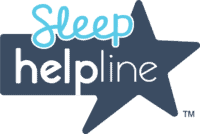Medical management of narcolepsy is continuously evolving. Special guest Dr. Anne Marie Morse, DO joined us on Narcolepsy Nerd Alert to discuss new options and exciting possibilities on the horizon.
The Narcolepsy Nerd Alert series invites listeners to dive deeper into specific topics relevant to living with narcolepsy. To explore more topics related to living with narcolepsy, visit our Narcolepsy Nerd Alert page and check out corresponding toolkits available to download for free.





